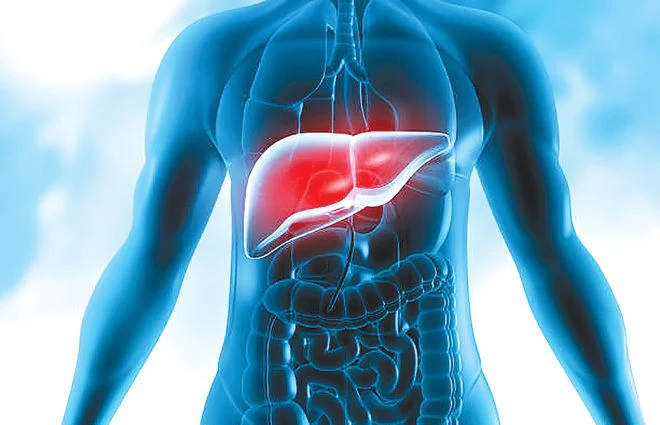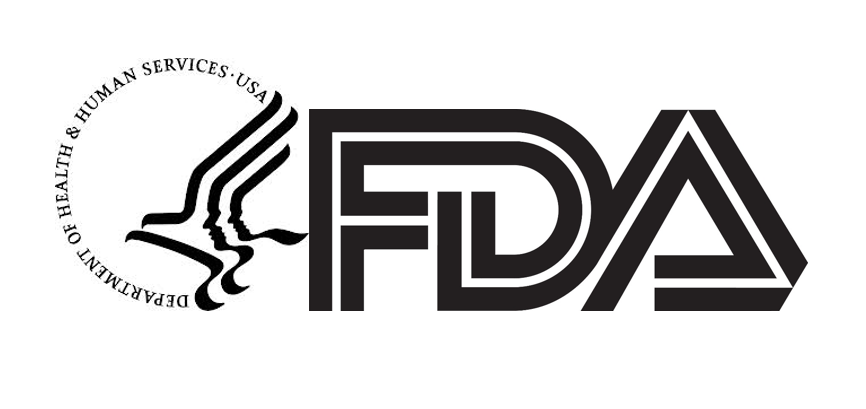In recent years, we’ve seen a surge of interest in SARMs, or selective androgen receptor modulators. These compounds have caught the attention of bodybuilders, athletes, and fitness enthusiasts looking for alternatives to traditional steroids. Many are asking “What are SARMs?” and wondering about their effects on muscle growth and performance enhancement. While SARMs promise benefits like increased muscle mass and improved bone density, it’s crucial to understand their potential risks.
We’ll dive into the world of SARMs, exploring how they work and their potential uses. We’ll also look at the side effects and health concerns associated with these compounds. Additionally, we’ll discuss the legal status of SARMs and current regulations. By the end of this guide, you’ll have a clearer picture of what SARMs are, their pros and cons, and whether they might be right for you. Remember, it’s always best to consult with a healthcare professional before starting any new supplement regimen.
What are SARMs?
Definition and mechanism of action
Selective androgen receptor modulators, or SARMs, are a class of compounds that affect the androgen receptors in our body. We can think of SARMs as keys that unlock these receptors in our muscles and bones, allowing a rush of testosterone and dihydrotestosterone (DHT) into those areas. This mechanism has an influence on muscle development, bone density, and sexual function.
SARMs work by selectively binding to androgen receptors, depending on their chemical structure. This selective binding has an impact on anabolic cellular activity while avoiding many of the side effects associated with traditional anabolic steroids. The tissue-specific effects of SARMs are what make them attractive, as they can be tailored to address specific medical conditions while minimizing off-target effects.
Types of SARMs
There are various types of SARMs, each with its unique properties and potential benefits. Some common types include:
- Arylpropionamide SARMs: These were among the first non-steroidal SARMs developed in 1998 by researchers at the University of Tennessee.
- Quinolone-based SARMs: Developed independently by Ligand Pharmaceuticals, also in 1998.
- Hydantoin derivatives: These SARMs have shown high affinity and specificity for androgen receptors.
- Bicyclic 6-anilino quinolinone derivatives: These compounds have demonstrated anabolic activity on muscles and bones in preclinical studies.
Each type of SARM has its own unique chemical structure and properties, leading to varying degrees of effectiveness and potential side effects.
Comparison to anabolic steroids
While SARMs and anabolic steroids both aim to encourage muscle growth, their mechanisms of action differ significantly. SARMs target specific androgen receptors in muscles and bones, whereas anabolic steroids unlock androgen receptors throughout the entire body. This targeted approach of SARMs potentially reduces the risk of unwanted side effects in other tissues.
Another key difference is that SARMs are not metabolized to dihydrotestosterone (DHT) by 5α-reductase, which reduces the risk of androgenic effects. Additionally, SARMs are not converted to estrogen by aromatase, limiting estrogenic effects. This selective action is what gives SARMs their name – they modulate androgen receptor activity in a tissue-selective manner.
Anabolic steroids, on the other hand, can create new androgen receptors throughout the body, leading to more widespread effects. This broader impact is why anabolic steroids are associated with a higher rate of adverse effects compared to SARMs.
It’s important to note that while SARMs show promise, they are still in the early stages of clinical evaluation. As of 2023, no SARMs have been approved for therapeutic use by the U.S. Food and Drug Administration or the European Medicines Agency 1. Therefore, their long-term effects and safety profile are not yet fully understood, and more research is needed to establish their efficacy and safety for various applications.
Potential Benefits and Uses of SARMs
We’ve seen that selective androgen receptor modulators (SARMs) have caught the attention of researchers and fitness enthusiasts alike. These compounds show promise in various areas, from muscle growth to treating certain medical conditions. Let’s explore some of the potential benefits and uses of SARMs.
Muscle growth and fat loss

One of the main reasons SARMs have gained popularity is their potential to encourage muscle growth and fat loss. These compounds have an influence on anabolic cellular activity, which means they can help build muscle mass. Some studies suggest that SARMs can increase lean body mass and reduce body fat 1. This dual benefit has made them attractive to bodybuilders and athletes looking to enhance their physique and performance.
SARMs work by selectively binding to androgen receptors in muscles and bones. This targeted approach potentially reduces the risk of unwanted side effects in other tissues, unlike traditional anabolic steroids. Many users have reported impressive gains in lean muscle mass and overall physical performance when using SARMs .
Treatment of muscle wasting diseases
SARMs hold promise as a new class of function-promoting anabolic therapies for a number of clinical conditions. They’re being evaluated as a potential treatment for muscle-wasting caused by several diseases, such as cancer cachexia, chronic obstructive pulmonary disease (COPD), and HIV .
The ability of SARMs to promote both muscle strength and bone mechanical strength gives them a unique advantage over other therapies. This is particularly important because survival of cancer patients correlates directly with muscle mass . SARMs may have the potential to improve muscle regeneration and increase lean body mass in patients suffering from these conditions.
Osteoporosis and bone health
Another exciting area where SARMs show potential is in the treatment of osteoporosis and improvement of bone health. While existing therapies for osteoporosis are anti-resorptive, capable of halting bone breakdown but not reversing the process, multiple SARMs have demonstrated the ability to promote new bone growth and increase bone strength in animal models .
Recently, four SARMs—BA321, YK11, ostarine, and LY305—have shown promise in the potential treatment of osteoporosis. For example, ostarine (Enobosarm) has demonstrated beneficial effects on bone mineral density and bone volume in preclinical studies . These findings suggest that SARMs could potentially offer a new approach to treating osteoporosis and improving bone health.
It’s important to note that while these potential benefits are exciting, SARMs are still in the early stages of clinical evaluation. As of 2023, no SARMs have been approved for therapeutic use by the U.S. Food and Drug Administration or the European Medicines Agency . Therefore, more research is needed to establish their long-term effects, safety profile, and efficacy for various applications.
Side Effects and Health Risks
While selective androgen receptor modulators (SARMs) have gained popularity for their potential benefits, we must also consider the associated risks and side effects. As these compounds are still in the early stages of research, their long-term effects remain largely unknown. However, several studies and case reports have highlighted potential health concerns that users should be aware of.
Liver toxicity

One of the most significant risks associated with SARMs is their potential to cause liver damage. We’ve seen multiple reports of drug-induced liver injury (DILI) linked to SARM use 1. In some cases, users have experienced severe cholestatic liver injury, which can lead to jaundice, fatigue, and even acute liver failure . The mechanism behind SARM-associated hepatotoxicity is not fully understood, but it’s thought to be similar to anabolic steroid-induced liver damage .
Cardiovascular risks
SARMs may also have an impact on cardiovascular health. The FDA has warned that these compounds could increase the risk of heart attack and stroke . Additionally, some studies have shown that SARMs can lower high-density lipoprotein (HDL) cholesterol levels, which is considered “good” cholesterol . This alteration in lipid metabolism could potentially increase the risk of cardiovascular disease.
Hormonal imbalances
Despite being marketed as a safer alternative to anabolic steroids, SARMs can still cause hormonal disruptions. Users have reported decreased endogenous testosterone levels, which can lead to various issues, including sexual dysfunction and fertility problems . Some individuals have even experienced testicular shrinkage as a result of SARM use .
Other potential side effects
The list of potential side effects associated with SARMs is extensive and concerning. Users have reported experiencing sleep disturbances, hallucinations, and mood swings 5. There have also been cases of rhabdomyolysis, a serious condition involving the breakdown of muscle tissue 6. Additionally, some SARMs have been linked to tendon ruptures, highlighting the potential for musculoskeletal complications 7.
It’s crucial to note that many of these side effects have been observed in recreational users who often take doses significantly higher than those used in clinical trials. The lack of regulation in the production and sale of SARMs also means that users may be exposed to contaminated or mislabeled products, further increasing the risk of adverse effects 8.
As research on SARMs continues, we’re likely to uncover more information about their long-term effects and safety profile. Until then, it’s essential for individuals considering SARM use to weigh the potential benefits against these serious health risks carefully. Consulting with a healthcare professional before starting any new supplement regimen is always recommended, especially when it comes to compounds like SARMs that are not approved for human use.
Legal Status and Regulation
We’ve seen that the legal landscape surrounding selective androgen receptor modulators (SARMs) is complex and evolving. Let’s explore the current status of these compounds and the regulatory challenges they face.
FDA stance on SARMs

The Food and Drug Administration (FDA) has taken a firm position against the sale and use of SARMs. These compounds are not approved for human consumption and are considered unapproved drugs 1. The FDA has expressed serious concerns about the potential health risks associated with SARMs, including an increased risk of heart attack, stroke, and life-threatening reactions like liver damage .
To address these concerns, the FDA has been actively working to curb the illegal marketing and sale of SARMs. They’ve issued warning letters to companies selling these products, especially those marketing them as dietary supplements . An FDA spokesperson stated, “We will continue to take action against companies that illegally market these products” .
It’s important to note that possessing or distributing unapproved drugs like SARMs can result in criminal charges, fines, and even imprisonment . While prosecutions specifically targeting SARMs users are relatively rare, the risk is still present .
Banned status in sports
The World Anti-Doping Agency (WADA) and the National Collegiate Athletic Association (NCAA) have prohibited the use of SARMs in sports . These organizations recognize the potential for SARMs to enhance athletic performance unfairly and have added them to their list of banned substances.
Athletes need to be particularly cautious when choosing supplements, as some products marketed as “dietary supplements” may contain undeclared SARMs. A study published in 2020 found significant discrepancies between the labeled contents and actual composition of many supplements claiming to contain SARMs 5.
Availability and marketing as supplements
Despite their illegal status, SARMs are often marketed and sold as dietary supplements. However, this classification is incorrect and potentially dangerous. The FDA has clearly stated that SARMs do not meet the legal definition of dietary supplements 6.
Companies attempting to sell SARMs often use deceptive marketing tactics. Some label their products for “research purposes only” while actually targeting fitness enthusiasts for personal use. The FDA and Department of Justice view this practice as criminal fraud 7.
The lack of regulation in the production and sale of SARMs means that users may be exposed to contaminated or mislabeled products. A 2017 study found that only about half of the products marketed as SARMs actually contained any SARM compounds, and many contained substances not listed on the label 8.
As research on SARMs continues and public awareness grows, we may see changes in how these substances are regulated. Dr. Michael Sachs, a professor of law specializing in drug policy, notes, “The legal status of SARMs is a moving target. As more research emerges, we may see a shift in how these substances are regulated” 9.
Conclusion
SARMs have made waves in the fitness and medical communities, offering potential benefits for muscle growth, fat loss, and bone health. However, their use comes with significant risks, including liver toxicity, cardiovascular issues, and hormonal imbalances. The lack of long-term studies and FDA approval underscores the need for caution when considering these compounds.
As research continues, we may see changes in how SARMs are regulated and used. For now, it’s crucial to weigh the potential benefits against the serious health risks carefully. Always consult with a healthcare professional before starting any new supplement regimen, especially when it comes to compounds like SARMs that aren’t approved for human use. Staying informed and prioritizing health and safety should be the top priorities for anyone interested in these substances.
FAQs
Is having SARMs illegal?
The legal status of SARMs varies by country and jurisdiction:
In the United States, SARMs are not approved for human use by the FDA. They are illegal to sell as dietary supplements but are not classified as controlled substances.
In many countries, SARMs exist in a legal gray area. They’re often not explicitly illegal but are also not approved for human consumption.
Some countries have classified SARMs as prohibited substances, making their possession and use illegal.
Always check your local laws and regulations regarding SARMs, as their legal status can change.Are SARMs safe?
lished due to limited long-term studies in humans:
SARMs are still considered experimental drugs.
While they’re designed to be more selective than traditional anabolic steroids, potentially reducing side effects, they’re not without risks.
Short-term studies have shown various side effects, including liver toxicity, cardiovascular issues, and hormonal imbalances.
Long-term effects are largely unknown due to lack of extensive research.
Given their experimental nature, using SARMs carries potential health risks.Do SARMs lower testosterone?
Yes, SARMs can lower natural testosterone production:
SARMs bind to androgen receptors, signaling the body that there’s sufficient testosterone.
This can lead to suppression of the body’s natural testosterone production.
The degree of suppression can vary depending on the specific SARM and dosage used.
After discontinuing SARMs, it may take weeks or months for natural testosterone production to return to normal levels.
In some cases, medical intervention may be necessary to restore hormonal balance.Do SARMs cause gyno?
While less common than with anabolic steroids, SARMs can potentially cause gynecomastia (gyno):
Some SARMs can convert to estrogen in the body, leading to hormonal imbalances.
Increased estrogen levels can stimulate breast tissue growth in males.
The risk varies depending on the specific SARM, dosage, and individual susceptibility.
Proper post-cycle therapy and monitoring can help mitigate this risk.
If you notice any breast tissue changes while using SARMs, consult a healthcare professional immediately.Are SARMs bad for sperm?
SARMs can potentially impact sperm production and quality:
By suppressing natural testosterone production, SARMs can decrease sperm count and motility.
Some studies have shown that certain SARMs can directly affect testicular function.
The impact on fertility may be temporary, but long-term effects are not well-studied.
Recovery of sperm production after discontinuing SARMs can take several months.
If you’re concerned about fertility, it’s advisable to avoid SARMs and consult with a fertilityWhat organs do SARMs affect?
SARMs can potentially affect multiple organ systems:
Liver: Some SARMs have shown hepatotoxicity, potentially causing liver damage.
Cardiovascular system: SARMs may affect cholesterol levels and heart function.
Endocrine system: They can disrupt the hypothalamic-pituitary-gonadal axis, affecting hormone production.
Skeletal system: While they can increase bone density, long-term effects are unknown.
Prostate: Some SARMs may affect prostate size and function.
Brain: There’s potential for mood changes and cognitive effects.
The full range of organ systems affected is still being studied.Do SARMs cause erectile dysfunction?
SARMs can potentially contribute to erectile dysfunction (ED):
By suppressing natural testosterone production, SARMs can lead to low testosterone levels, a known cause of ED.
Hormonal imbalances caused by SARMs can affect libido and sexual function.
Some users report decreased sexual performance while on SARMs.
ED symptoms may persist after discontinuing SARMs until hormonal balance is restored.
If you experience ED while using SARMs, consult a healthcare provider for proper evaluation and treatment.Are SARMs hard on your liver?
Yes, some SARMs can be hepatotoxic (harmful to the liver):
Certain SARMs, particularly oral forms, have shown potential to cause liver damage.
Elevated liver enzymes have been observed in some SARM users, indicating liver stress.
The extent of liver damage can vary based on the specific SARM, dosage, and duration of use.
Pre-existing liver conditions may increase the risk of SARM-induced liver damage.
Regular liver function tests are crucial if using SARMs, and any signs of liver problems should prompt immediate medical attention.What do SARMs do to your heart?
SARMs can potentially impact cardiovascular health:
Some SARMs have been shown to negatively affect cholesterol levels, decreasing HDL (good cholesterol) and increasing LDL (bad cholesterol).
There’s potential for increased blood pressure in some users.
Long-term cardiovascular effects are not well-studied but could include increased risk of heart disease or stroke.
Some animal studies have suggested potential direct effects on heart tissue.
Given these potential risks, anyone with pre-existing heart conditions should be particularly cautious about SARM use, and all users should monitor their cardiovascular health closely.
References
[1] – https://en.wikipedia.org/wiki/Selective_androgen_receptor_modulator
[2] – https://www.ncbi.nlm.nih.gov/pmc/articles/PMC2907129/
[3] – https://www.usada.org/spirit-of-sport/education/selective-androgen-receptor-modulators-sarms-prohibited-class-anabolic-agents/
[4] – https://www.sciencedirect.com/topics/medicine-and-dentistry/selective-androgen-receptor-modulator
[5] – https://www.uspharmacist.com/article/recreational-use-of-selective-androgen-receptor-modulators
[6] – https://www.goodrx.com/well-being/movement-exercise/what-are-sarms
[7] – https://vicorpus.com/a-beginners-guide-to-sarms-what-you-need-to-know/
[8] – https://www.dnaindia.com/india/report-beginner-sarm-cycle-guide-best-sarms-stack-for-beginners-bulking-cutting-strength-3094686
[9] – https://www.reddit.com/r/AminoInsights/comments/1c5sd1c/beginners_guide_to_sarms_cycle_with_ostarine/
Dr. Grant Fourie, a specialist in male hormones, is based in Cape Town, South Africa. He provides comprehensive treatments for conditions related to low testosterone, such as erectile dysfunction, fatigue, and mood changes. His methods include hormone replacement therapy and other modern treatment options.
Contact me via email or phone to book personal appointment in my clinic: The Village Square, Cape Town - South Africa



